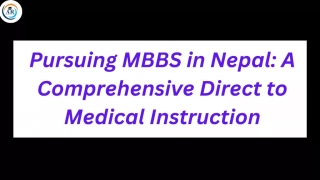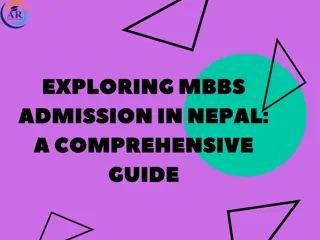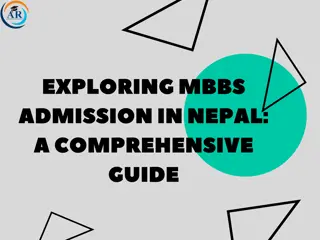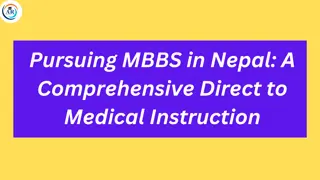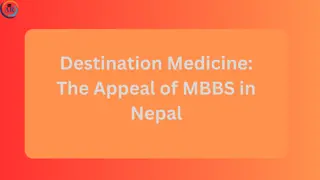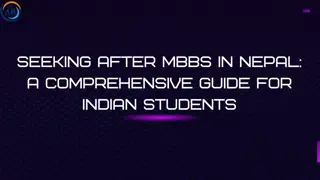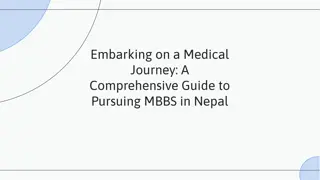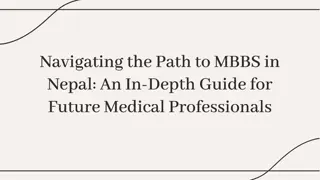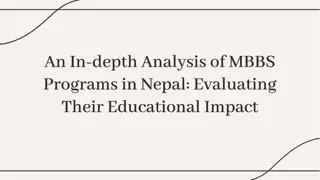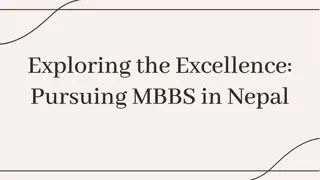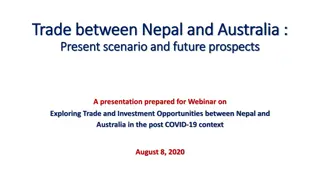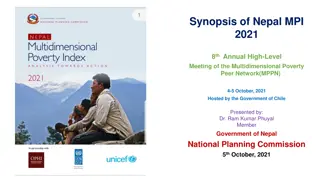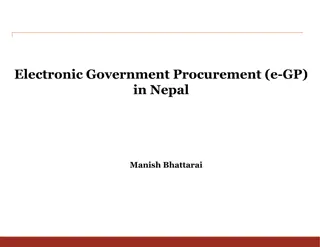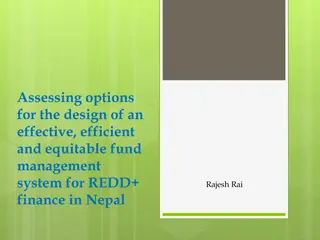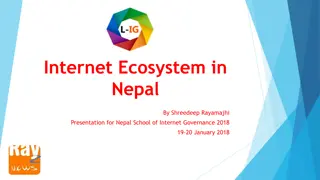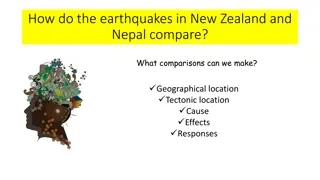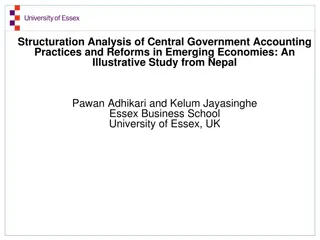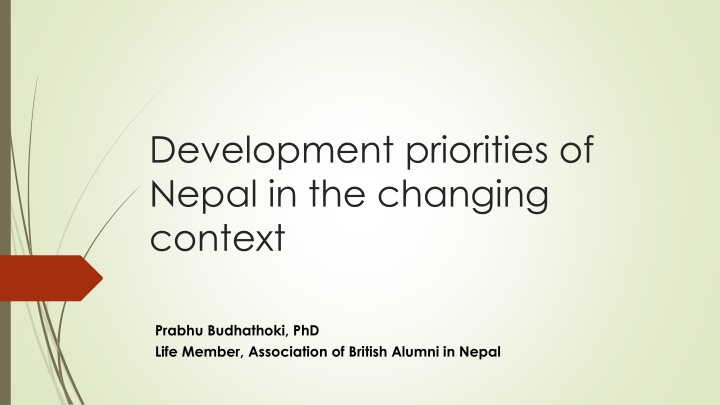
Evolution of Development Priorities in Nepal: A Comprehensive Overview
Explore the evolving landscape of Nepal's development priorities under changing contexts, including political, social, economic, environmental, and global influences. From shifting political structures to economic trends and environmental challenges, this analysis delves into key areas such as poverty reduction, infrastructure development, and social equity, shedding light on the nation's progress and challenges.
Download Presentation

Please find below an Image/Link to download the presentation.
The content on the website is provided AS IS for your information and personal use only. It may not be sold, licensed, or shared on other websites without obtaining consent from the author. If you encounter any issues during the download, it is possible that the publisher has removed the file from their server.
You are allowed to download the files provided on this website for personal or commercial use, subject to the condition that they are used lawfully. All files are the property of their respective owners.
The content on the website is provided AS IS for your information and personal use only. It may not be sold, licensed, or shared on other websites without obtaining consent from the author.
E N D
Presentation Transcript
Development priorities of Nepal in the changing context Prabhu Budhathoki, PhD Life Member, Association of British Alumni in Nepal
What are the changes??? Political landscape Social and cultural landscape Economic landscape Environmental context Global development context
Political context Unitary to federal Constitutional provisions: Rights to food, health service, clean environment, employment, housing etc Regional and ethnicity monarchy to marginalization Political Stability
Social and cultural landscape Migration - 4 million out of country, 3.18%/year from rural to urban Demography and family high youth population 16- 14 years approx. 41% Social and ethnic dynamics Occupations agriculture to service
Economic landscape Rising private sector 39.4% -public; 54.7% - private; 5.9 cooperative Decreasing external aid 45% (2048) 15% (2073) End of the Poverty Zero hunger
Environmental context Climate change - 2-4% GDP loss Natural disasters Rivers, forests and biodiversity
Global development context Changing scenario of external funding Two growth poles Towards green economic pathways Globalization in question ?? SDGs
Development priorities Poverty and hunger 23.7% (2015) to 4.9% (2030)- people living below $1.25 a day $2 a day from 36% (2015) to 8% (2030) Prevalence of under nourishments from 36.1% (2015) to 3% (2030) Employment : Employed people below $1.25 a day from 22% (2015) to 1% in 2030 Energy and power: Safe drinking water from 15% to 90%; Hydro power 782 MW to 15000 MW Tourism Infrastructure and industries Accessibility and transportation: road density 0.55 km/sq km to 1.3 km/sq km 7 Js jal, jamin, jangal, jadibuti, jaibik kethi, jibant culture and bhu-drishya, Javan (youth)
Development issues Trade deficit Time and cost over run of the projects Corruption : Corruption Perception Index: 29, Doing Business Index: 105 Unemployment Growing female headed families Regional and social inequity
Pop below PL (%) HDI 50 0.6 45 0.5 40 35 0.4 30 25 0.3 20 0.2 15 10 0.1 5 0 0 P1 P2 P3 P4 P5 P6 P7 P1 P2 P3 P4 P5 P6 P7
Road Networks (KM) Income per person 2500 2500 2000 2000 1500 1500 1000 1000 500 500 0 0 P1 P2 P3 P4 P5 P6 P7 P1 P2 P3 P4 P5 P6 P7
Transition to transformation Business as usual not enough Per capita energy consumption: 160kw/hr to achieve mid income country level we need at least 700kw/hr Hindu growth and Buddhist economy not enough Double digit growth Resilient economy
Aspirations and milestones Equitable and inclusive society welfare state Graduation from LDC to mid income country by 2030 Geographical benefits - Bridge between India and China Demographic dividend.
O many work with vigor and strength, drives away the evils of poverty and disease Atharva Veda 6:81:1


